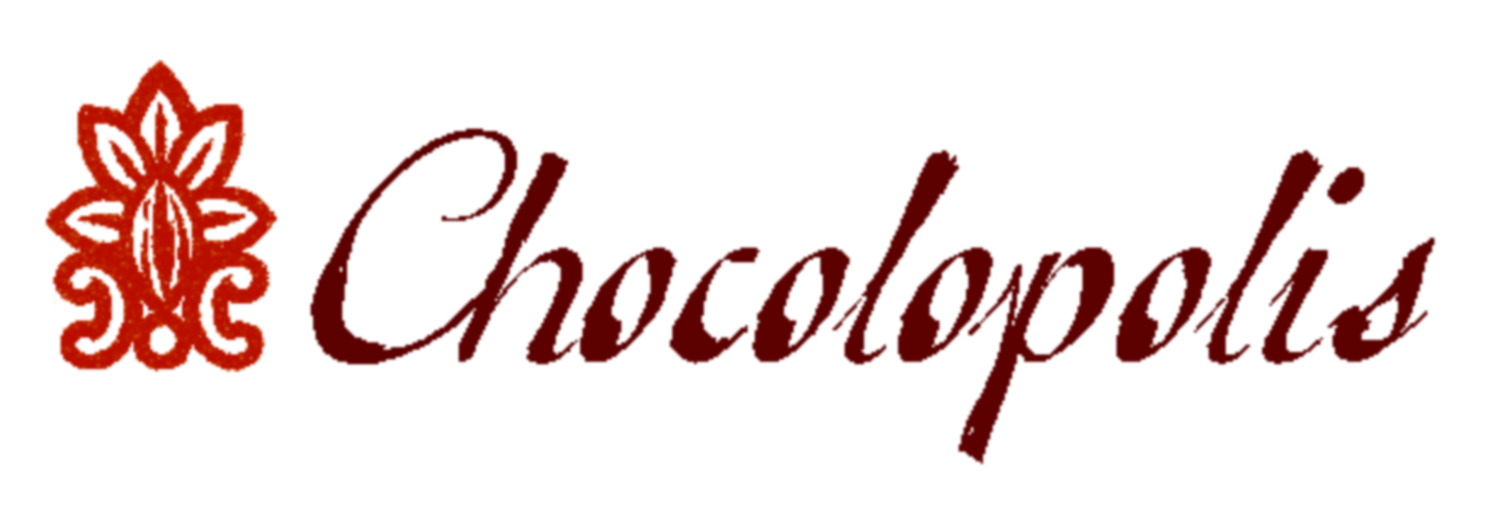June 14 - September 28
A number of years ago The Field Museum of Chicago put together an exhibit about chocolate and cacao. I never had the chance to see the exhibit while it was open, so I was excited to find out that Seattle's Museum of History and Industry (MOHAI) would be hosting a traveling version of the exhibit, which opened this past weekend and is in town through September 28.
I went on opening day, prompted by the energetic Samantha Reynolds, a customer of ours who has become a good friend.
Samantha and I spent about an hour touring the exhibit, and it was definitely worth the time. It begins with an excellent depiction of the necessary growing conditions for cacao, including features on the animals that spread the seeds, and the midges (insects) that pollinate the flowers. There's even a midge specimen in a glass case with an arrow pointing to it, in case you mistake this tiny insect for a piece of dust. This is the best illustration I've seen of growing conditions and forest culture for cacao.
The exhibit continues with the human uses of cacao, beginning with the Mayans and the Aztecs, followed by the adoption of chocolate as a beverage by Europeans, its transformation into chocolate bars and the growth of mass market chocolate. While there's a nod to the very difficult and complex sourcing issues facing the world of cacao today, the exhibit does not go into depth in this area.
The exhibit does a very good job of telling the story of cacao and chocolate in both the ancient and the modern worlds. I recommend a visit.
As someone immersed in the industry, I already know a lot about chocolate and cacao, so I wondered if I'd learn anything new. I did.
My "Aha!" Moments
While I know a good amount about the history of cacao in Maya and Aztec lands, a distinction between the uses of cacao in their cultures became clear to me from this exhibit.
I'd always believed that only the wealthy could afford cacao. What I learned from the exhibit is that this is true for the Aztecs, but not for the Maya. Cacao was enjoyed by the rich and poor alike in Mayan lands. The Maya grew cacao in their backyards, just as I saw them doing in Belize. Every Maya family has trees and cultivates cacao for their own use.
In the Aztec regions, however, cacao was reserved for the elite and the wealthy. While the Aztecs consumed cacao, they had difficulty growing it because of the arid climate where they lived. Their traders would head to Mayan lands and pick up loads of cacao to bring back to sell or trade. It was used as currency in Aztec culture, and it was the purview of the rich.
Another fun fact I learned: saucers were invented to keep chocolate off of clothes. Who knew?
Overall, the exhibit was great. There were a few areas for improvement that I hope the MOHAI will address before the end of the exhibit.
What I'd Like to See Changed
First, the feature on Seattle-area chocolatiers and chocolate makers was very limited and excluded many that are an important part of the fabric of the Pacific Northwest's vibrant chocolate community. Seattle has earned recognition in the international community because of the diversity and strength of its chocolate culture. MOHAI chose to focus on six chocolatiers and chocolate makers in the area, but excluded many, including Chocolopolis, who have had an impact on Seattle's international reputation for chocolate expertise. I contacted the staff at the MOHAI to share my concerns, and they've graciously agreed to meet to discuss ways to involve other community members in the conversation about Seattle chocolate.
Second, the aroma. Have you ever walked into a gift shop that features chocolate-scented candles? The same overwhelmingly artificial chocolate smell is being piped into this exhibit. While I applaud the museum's attempt to make this a truly sensory experience, the smell is unpleasant.
Third, an inaccuracy that was mentioned multiple times in the exhibit. While discussing the invention of milk chocolate by Daniel Peters & Henri Nestle, the exhibit said that they invented milk chocolate by adding "condensed milk" to chocolate. I don't think this is correct. I believe Nestle invented "powdered milk", and he and Peters added it to chocolate to create milk chocolate. Condensed milk would not have worked because of its water content.
Pick Up a Seattle Chocolate Map
Kudos to Brian Cisneros of the Northwest Chocolate Festival for working with MOHAI to put together a take-away map that plots all of the chocolate stores in Seattle. The map is great if you're interested in visiting the many chocolate stores within the city limits. It does not include some wonderful stores and makers outside of the city limits, but it's a fantastic start.
Next Up: How to Make Drinking Chocolate Like A Mayan
The exhibit reminded me of my on-the-ground experiences in Belize, where I had the opportunity to see drinking chocolate made by Mayans using traditional methods that date back centuries. I'll share recipes and photos of them making drinking chocolate in my next post.

